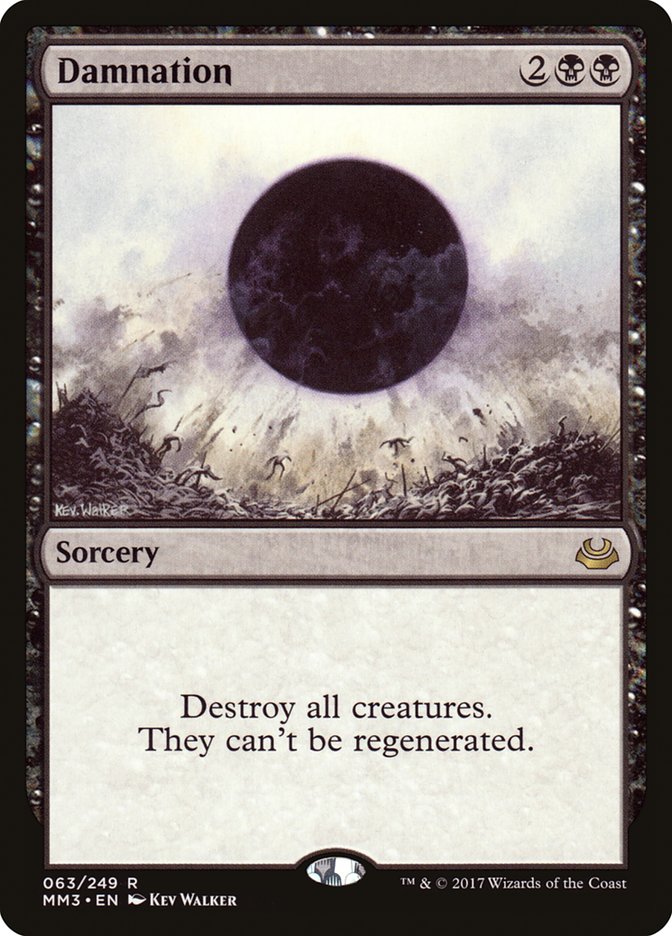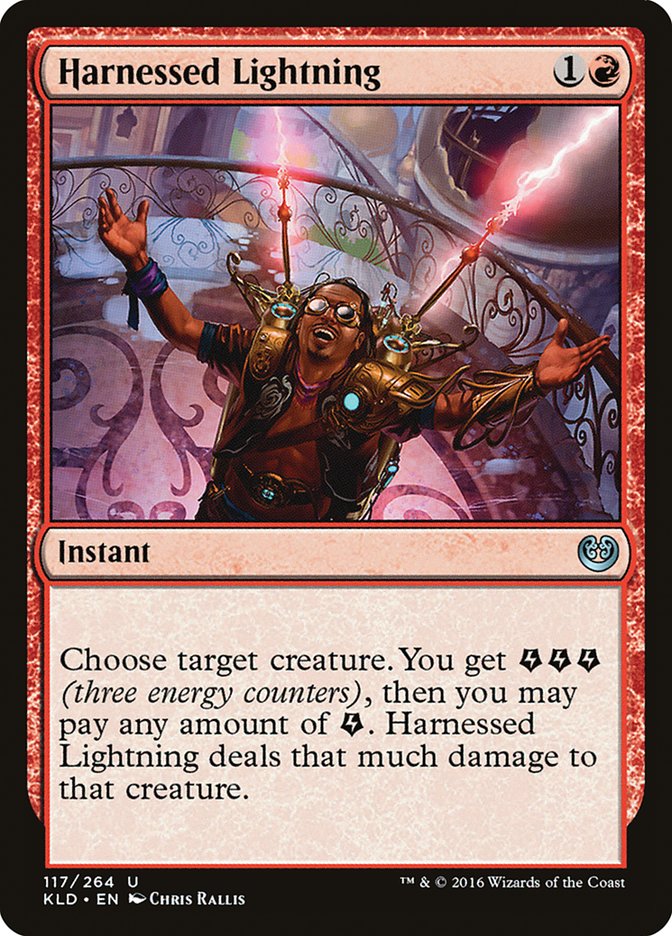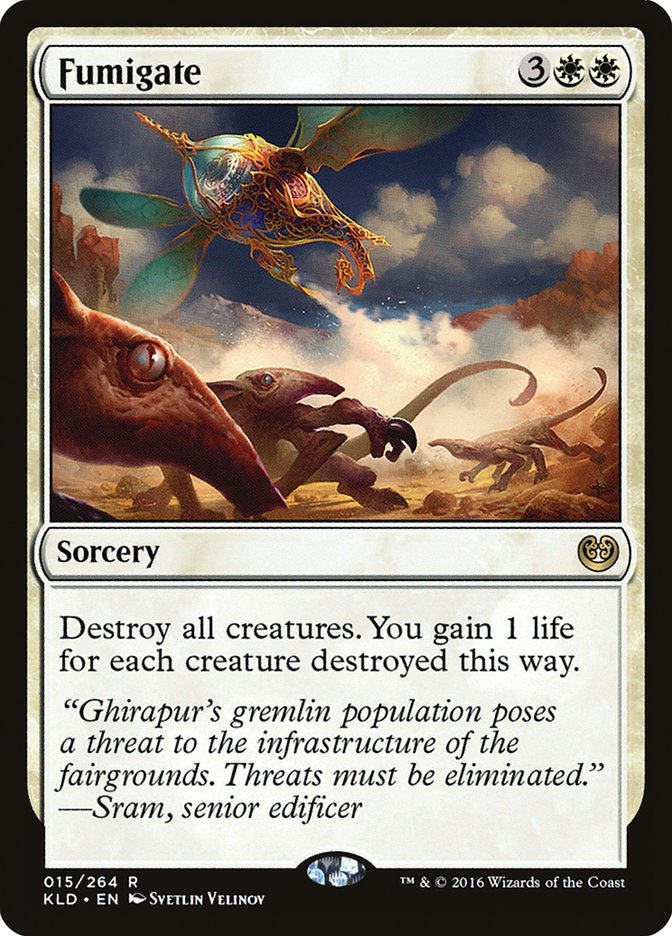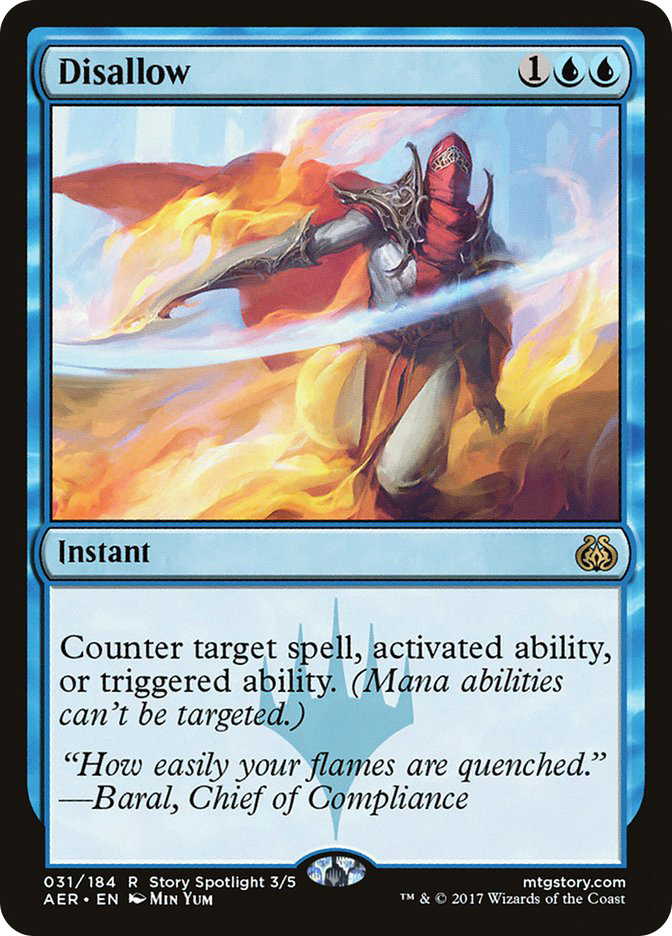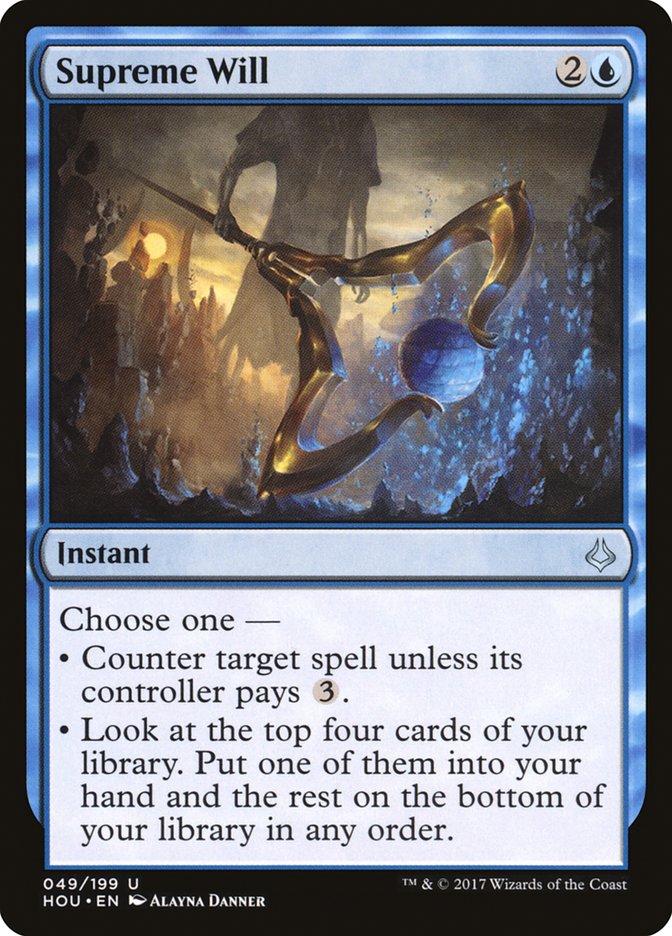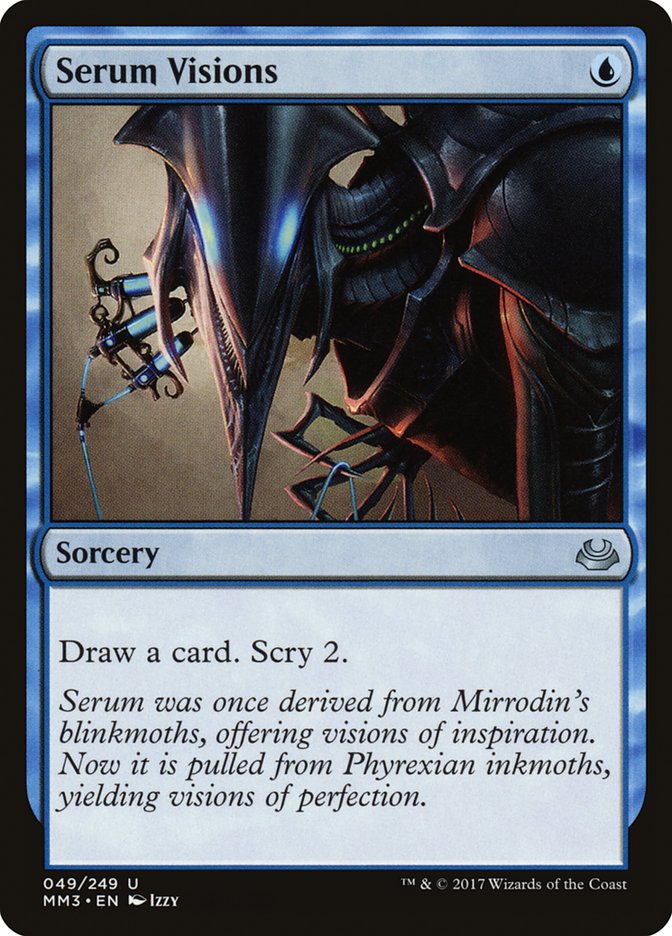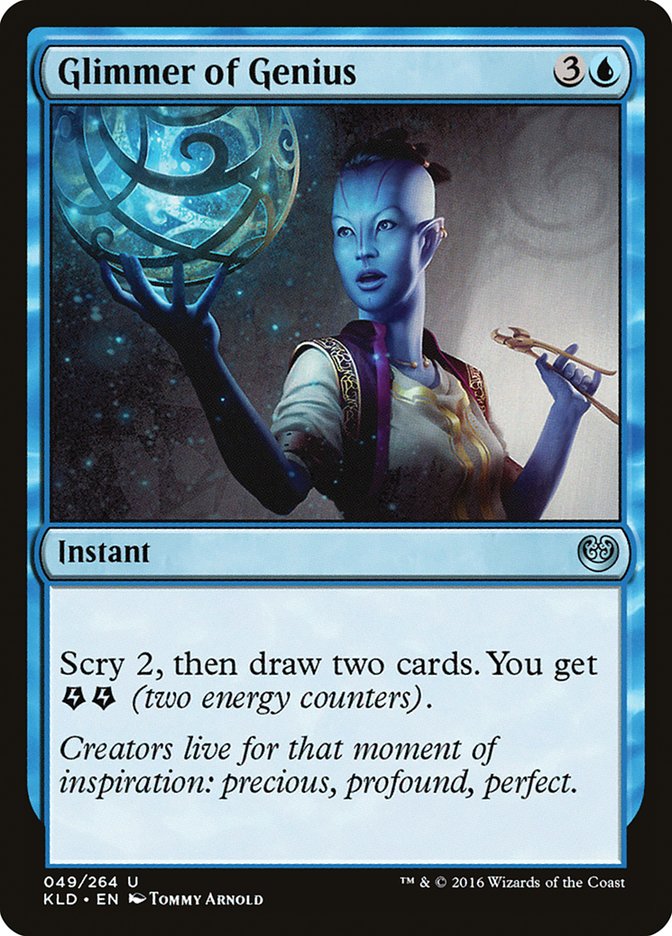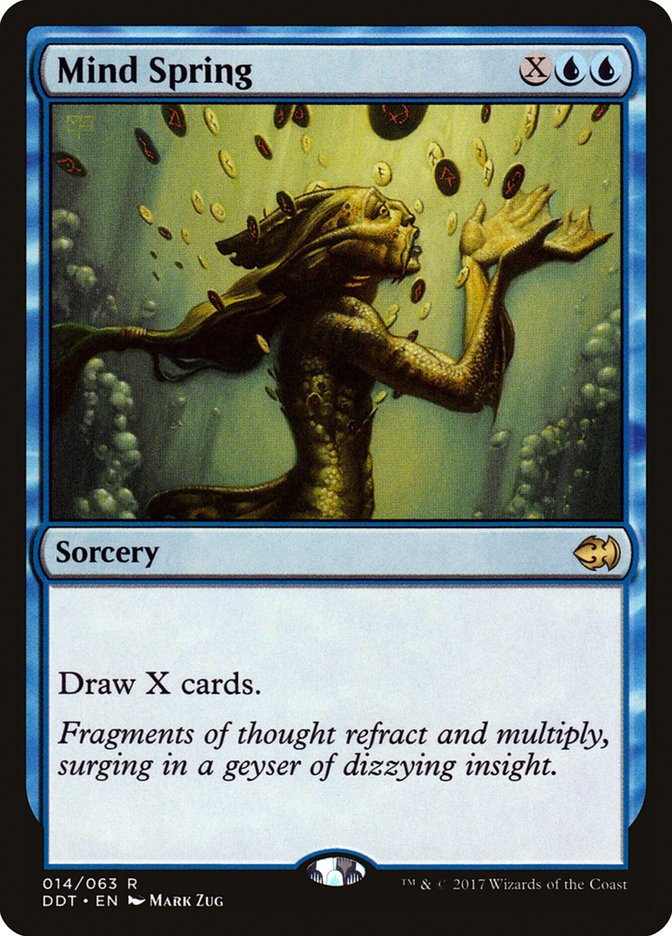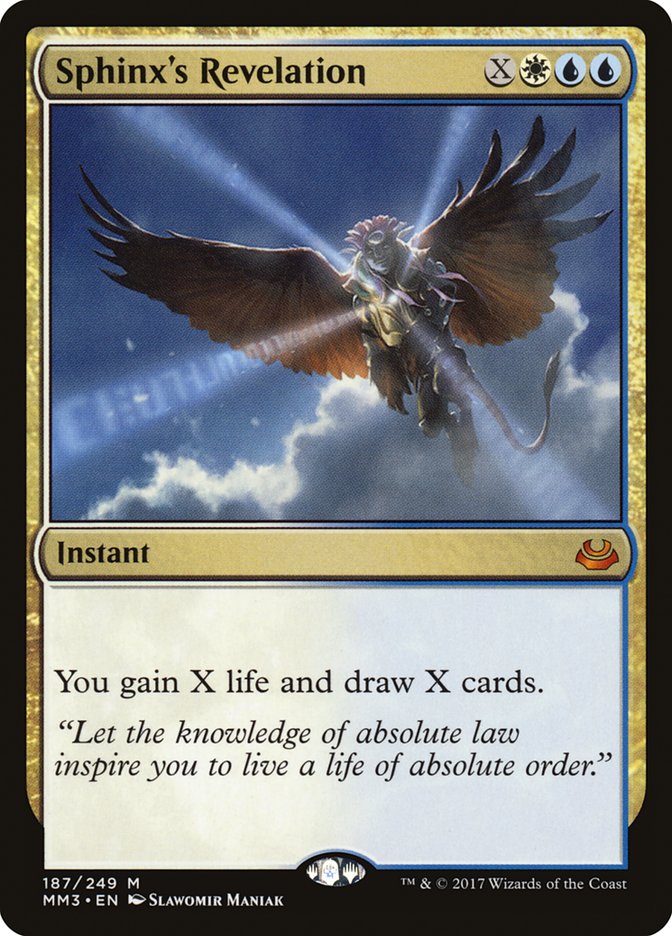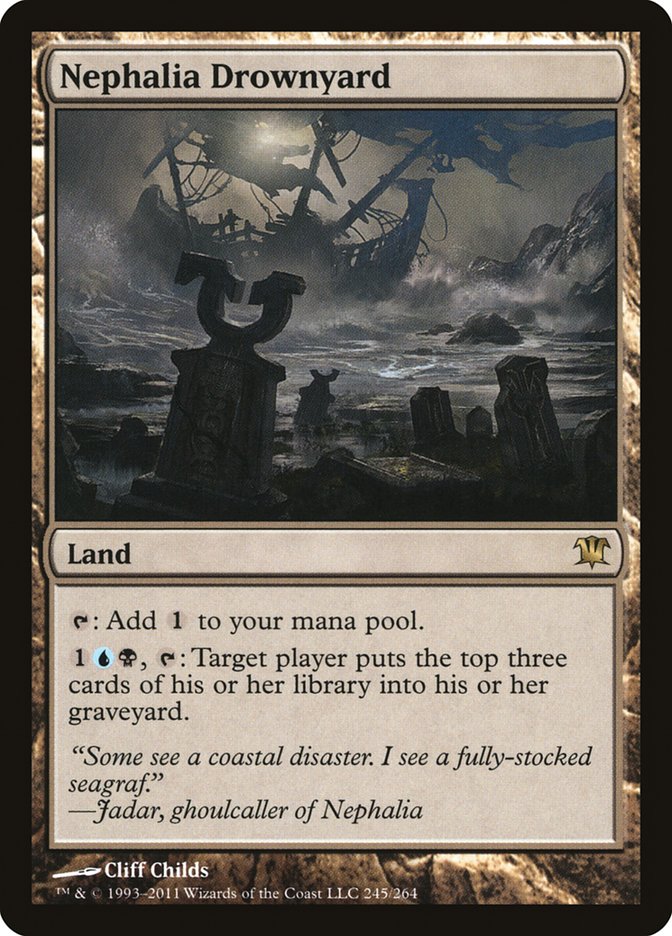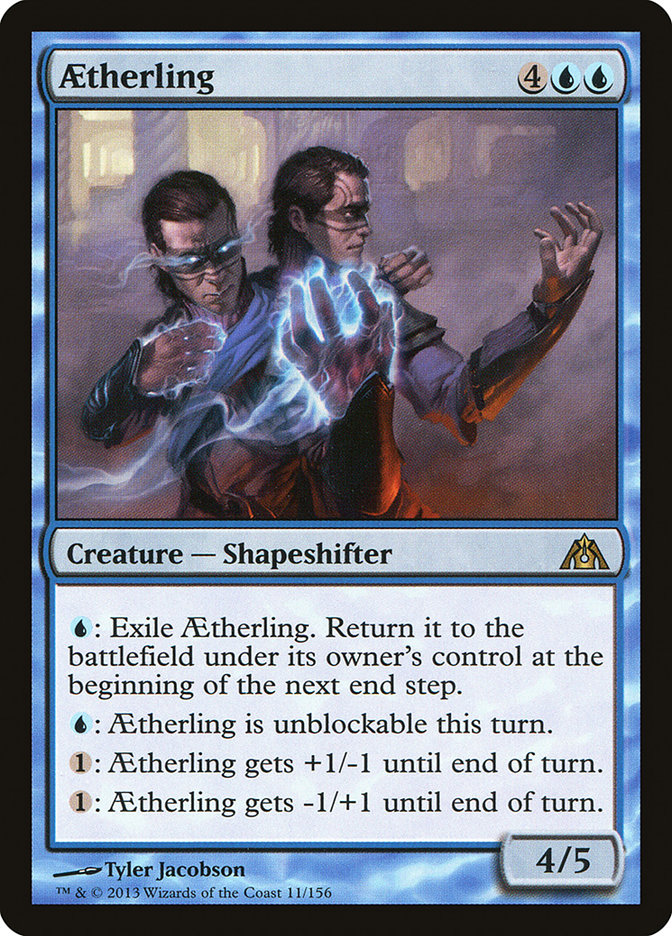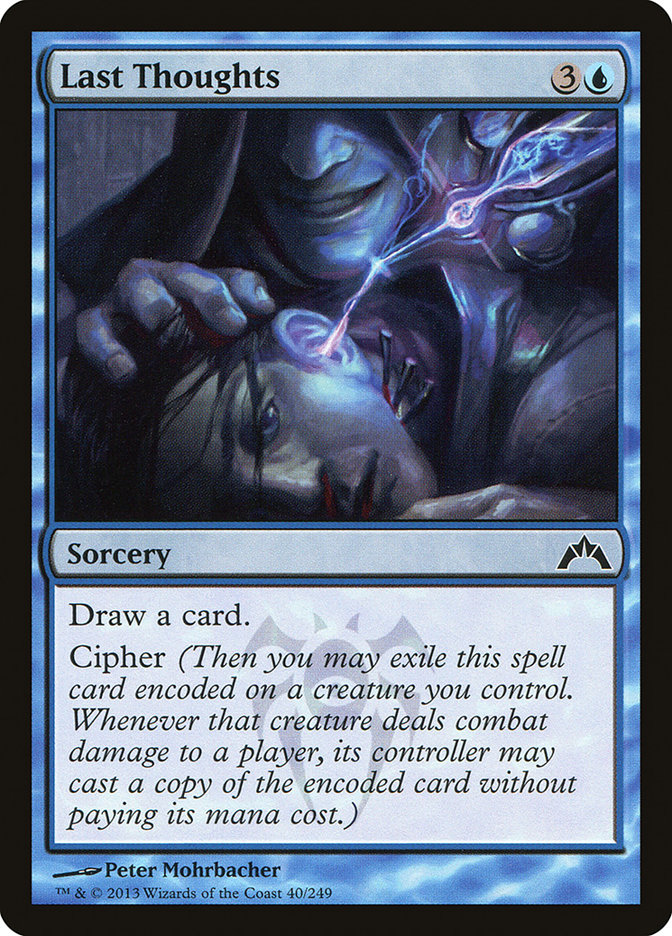Part two of our series on building decks in the new age will focus entirely on control. If you’re not a fan of control yourself, I hope this will help you understand why certain decks are built the way they are and perhaps give you insight on how you can systematically pick them apart. As for you control aficionados, let’s begin.
Control decks have been built a number of ways throughout Magic’s history. Not all control decks are blue-based, but the powerful effect of countering a spell allows blue mages to play the control role quite well. While counterspells are certainly good, there is a significant downside to playing them. For one, counterspells don’t usually interact with cards that are already on the battlefield. Cheap creature rushes will often punish players who are not ready with removal, and even then, said removal might tap you out just long enough for them to cast a big finisher.
The upside of playing control is that you usually get to navigate the pace of the game. This is especially true if you have an effective sweeper card like Day of Judgment or Damnation. Your opponent will be afraid to overextend their resources in fear of getting them all swept away by your mass removal spell, ultimately buying you time to set up whatever late-game spell you’re relying on to close the game.
While control is a significant part of all major formats at the moment, there are different variations on the archetype, and they’re often built in wildly different ways. Many decks are classified as “control” when I would often just call them “tempo” or even “midrange.”
Regardless, control decks show up constantly, and figuring out how to build them correctly is just as important as playing the games themselves. For control specifically, finding the right answers to the format is key because you’re the reactive party in the exchange. If your opponent just casts some creatures and you’re unable to deal with them, you’re going to lose.
There are no wrong threats, only wrong answers.
Building a Classic Control Deck
To simplify things, we’ll focus primarily on Standard, but I will use examples of older control decks to give you a visual example of what I’m talking about.
A classic control deck looks a lot like what you see Shaheen Soorani writing about every other week. And most of the time, Wizards of the Coast gives us a cookie-cutter set of cards to build our control decks with. Cards like Fumigate, or End Hostilities before it, are regularly in Standard as the status quo for sweeper effects. Five mana has become the norm as of late, but there was a time when four mana was the go-to for a Wrath of God variant.
Most control decks in the current era are built around four major components:
Removal. Whether it’s spot removal like Harnessed Lightning and Fatal Push or big sweeper effects like Fumigate, control decks will regularly have a lot of removal to help kill creatures. This is mostly to contain threats that could sneak in under a counterspell. If your entire deck is full of counterspells, you’ll ultimately lose to a Bomat Courier or the like without some number of cheap ways to interact with creatures that are already on the battlefield.
Counterspells. These are ways for a control decks to cheaply interact (and preemptively deal with) problematic permanents. In recent years, Wizards of the Coast has been much more generous with undercosted, powerful threats, many of which leave something behind if you kill it. Against these cards, it is important to have something like Disallow or Supreme Will to nix them before they hit the battlefield. After all, if you aren’t able to deal with their Chandra, Torch of Defiance before it hits the battlefield, you will usually be forced to tap out at some point to deal with it.
And after that, you’re left with a snowball effect that leaves you tapping out turn after turn, trying to play catch-up. And when you’re constantly playing from behind, you’ll never be able to start casting the spells that start pulling you ahead.
Card draw. Card draw comes in many forms. In Modern and Legacy, there are very few efficient options that give you pure card advantage (think Divination). Instead, you rely on stuff like Serum Visions to smooth out your draw in hopes that your powerful end-game cards will generate enough virtual card advantage to get the job done. That kind of card selection isn’t readily available in Standard, so we’re forced to resort to how we did it in the old days.
Two-for-one effects like Glimmer of Genius are solid additions to most control strategies, especially when you’re able to cast them at instant speed. Glimmer of Genius also has the benefit of gaining two energy, which helps turn something like Harnessed Lightning into a virtual Terminate. Glimmer of Genius and cards like it are also how you hit land drops to cast your finishers, find specific spells to interact with your opponent’s tough permanents, and recoup lost card advantage over time.
When you’re trading one-for-one in the current age of Magic, you’re generally fighting a losing battle. Most “good” creatures draw a card, leave something behind, have haste, or some ability you can use right away to gain an advantage. In some cases, you’re forced to trade one-for-two in order to contain your opponent’s early forms of aggression. You do this so you can buy yourself a free turn to cast Glimmer of Genius or something similar, ultimately gaining back that lost card advantage.
There are other types of card draw that come around every now and then that occasionally define control as a whole.
Since Mind Spring is a sorcery and was recently in the same Standard format as Jace, the Mind Sculptor, control took on a significantly different look.
Creatures (8)
Planeswalkers (7)
Lands (26)
Spells (19)

As you can see, this deck’s primary goal was to tap out every turn and eventually overwhelm the opponent with card advantage via Mind Spring or Jace, the Mind Sculptor. There are no counterspells in the maindeck because counterspells were quite bad against stuff like Bloodbraid Elf, which was rampant in that particular Standard format. As you can see, control had to evolve, and this is where it went. When counterspells are bad, control can still be good. You just need to be a little creative.
As for Sphinx’s Revelation, that produced an entirely new era of how to build control decks.
Creatures (1)
Planeswalkers (7)
Lands (27)
Spells (25)
- 2 Last Breath
- 1 Syncopate
- 2 Thoughtseize
- 2 Doom Blade
- 2 Azorius Charm
- 4 Supreme Verdict
- 4 Detention Sphere
- 4 Sphinx's Revelation
- 4 Dissolve
Sideboard

Here we have a strange hybrid between classic control elements and the tap-out deck from above. We still have powerful permanents in the form of Jace, Architect of Thought and Elspeth, Sun’s Champion, but we also have Dissolve as a way to stall out early threats. In this era of Standard, counterspells were quite good. Permanents were starting to get harder to deal with (Gods, more powerful Planeswalkers, etc.), and you needed a way to interact with them that didn’t put you behind a card.
But above all else, your entire goal with this deck was to run toe-to-toe with your opponent, casting removal and counterspells, trading one-for-one, until you had a window to cast Sphinx’s Revelation for X=3 or greater. In any scenario where you were able to cast a medium or large Sphinx’s Revelation on an unthreatening battlefield, the game virtually ended on the spot. And with a sweeper on four mana, a three-mana answer to problematic permanents, and powerful finisher effects that could act as virtual sweepers or close the game out, control was in rare form.
For me, the most interesting part about this version of control was how the deck sideboarded. In some matchups, the cuts were rather easy, but as you can see, the answers we were bringing in were all very cheap. I wanted to lower the casting cost of my deck to be able to interact with my opponent as much as possible, but also because I wanted to be able to use every single resource I gained off Sphinx’s Revelation.
The turn you take off to cast Sphinx’s Revelation is usually the turn where your opponent gets to deploy some problematic stuff. And if you’re going to come back, you need to hit them with two or three spells on your following turn to get yourself back in the game. Having too many expensive spells drawn off Sphinx’s Revelation choked your ability to get back in the game. And in some scenarios when you didn’t draw Supreme Verdict, you absolutely needed to cast two or three spells on the follow-up turn to survive.
Finishers. Finishers are probably the least-important part of any control deck, but you still need them to actually win the game. And, in most instances, you need them to be able to win two games in the allotted 50-minute time period of a match. But if I’m being honest, when you’re casting a Sphinx’s Revelation for X=9 or whatever, Sphinx’s Revelation is your finisher. It just doesn’t win the game proper.
For a short while in Standard, Nephalia Drownyard was the go-to win condition for control, and it was miserable to play with and against. But it was difficult to interact with and could be used to target yourself to find stuff like Think Twice or Forbidden Alchemy. Synergy!
As we saw above, Aetherling was a regular finisher in control decks during Return to Ravnica Standard because it was so hard to kill once it hit the battlefield. That is fairly common in control’s history (see Morphling), but I was never a huge fan of cards that couldn’t be interacted with.
I love Torrential Gearhulk as a finisher because it does two things extremely well for a control deck. Not only does it close games quickly thanks to having a large body, it also allows you to rebuy the most powerful card in your graveyard for free. That tempo swing has fueled control decks for the last year and change and is one of the few reasons for control decks to stay blue-based. While Torrential Gearhulk dies to traditional removal, it generates enough of an advantage to push you very far ahead (see Sphinx’s Revelation) that losing it isn’t particularly devastating.
This is probably my favorite type of finisher because The Scarab God is a way for control decks to win the game quickly once they establish control. Unfortunately, The Scarab God is basically a nightmare for any opponent without an immediate exiling answer, which makes it one of the most hated cards in Standard.
This one-two punch got both of these cards banned during Worldwake Standard, and for good reason. Jace, the Mind Sculptor was far too good in Standard and defined the format for months. Stoneforge Mystic became somewhat of a powerhouse when Batterskull was introduced to Standard, but it was already insanely powerful with just Sword of Feast and Famine.
Cheap win conditions for control are usually dangerous and lead to some strange instances of deckbuilding. For example, cards like Spell Pierce (soft, situational counterspells) aren’t usually good in a control deck. Games usually go pretty long, and Spell Pierce will get significantly worse as the game progresses. However, when you have a cheap threat that forces your opponent to interact with it, Spell Pierce can be exactly what you need to give you that one-turn boost.
In decks like these, cards like Spell Pierce become significantly better because you get to dictate the pace at which the game is played. You get to wait until the third turn to cast Stoneforge Mystic, or the fifth turn to cast your Jace, the Mind Sculptor, all so you can protect it with a Spell Pierce.
Control in the Current Standard
Creatures (6)
Lands (26)
Spells (28)

Control in today’s Standard metagame looks a lot like the control decks that have been popping up for ages. U/B Control, in its current form, looks similar to the Draw-Go decks of old. You sit back on your instant-speed spells, casting nearly all of your cards on your opponent’s turn. Casting so many instant-speed spells gives you flexibility on how you react, when you react, and what you react to.
While the old “Draw-Go” decks didn’t usually play a ton of removal, today’s Standard format is much more hostile when it comes to problematic (and fast) permanents. You need stuff like Fatal Push to kill things that get under your counterspells. You need stuff like Vraska’s Contempt to kill an opposing planeswalker or indestructible creature. You need blanket removal that can kill just about anything because this format is full of insanely powerful cards that come at you from myriad angles.
You also need to be mindful of your curve. Expensive removal like Vraska’s Contempt is not always a luxury we have in a Standard control deck. At times, getting your hand clogged by expensive removal spells leads to you falling too far behind, which snowballs into you not being able to play your catch-up spells (or draw spells to hit your land drops, etc.). And when you can’t play your cards that refresh your resources after trading a bunch of one-for-ones, you’ll usually flood out and die because your deck has more lands than your opponent’s.
Transformational Sideboard
We don’t get to see transformational sideboard plans often, but they’ve cropped up lately in Standard in a deck that ultimately started as an aggro list.
Creatures (18)
- 2 Archangel Avacyn
- 4 Thraben Inspector
- 2 Thalia, Heretic Cathar
- 4 Scrapheap Scrounger
- 4 Toolcraft Exemplar
- 2 Walking Ballista
Planeswalkers (4)
Lands (25)
Spells (13)

Sometimes an aggressive or midrange deck can transform into a control deck after sideboarding. In this case, Mardu Vehicles would cut many of its cheap creatures in order to fit in planeswalkers, sweeper effects, and more removal. In matchups where it benefited them, they would become the control deck and eventually outpace their opponent through virtual card advantage after trading their removal spells for opposing threats.
Planeswalkers like Gideon, Ally of Zendikar went a long way in providing the Mardu Vehicles deck with a way to generate virtual card advantage, even if they weren’t exactly drawing extra cards. The sideboard gave them more options with Sorin, Grim Nemesis and Nahiri, the Harbinger, but also more removal for the opposing midrange or aggressive deck to fight through. And due to all the powerful, cheap removal, you could easily find yourself casting a planeswalker on an empty battlefield on the fourth turn.
When your fourth turn brings something like Gideon, Ally of Zendikar, it’s easy to find the path to victory. The rest of your spells are just there to protect your planeswalkers and prevent your opponent from dealing those last few points of damage.
Virtually any deck can transform into a much more controlling version after sideboarding, given the right tools.
Creatures (15)
Lands (22)
Spells (23)

While this deck wasn’t quite a “true” control deck after sideboarding, it could shift easily from combo to midrange to control given the situation and opponent. Against other combo decks, having ways to interact (Negate, Counterflux, etc.) while setting up your combo was key. And in those matchups, you became the control deck while they were the “aggro” deck.
In other matchups, I would sideboard out the Splinter Twin combo (save for a Pestermite or two) and transition to a fair deck. Cards like Keranos, God of Storms are much harder to kill than a Deceiver Exarch and could help this fast-paced deck actually win a longer game. And while this deck, in any form pre- or post-sideboarding, is not a control deck per se, “control” is rarely about how your deck is built and much more about how your deck functions at any given time.
Any control deck can become the beatdown in the right situation. Any aggro deck can mold its gameplan to have more removal in order to slow things down and let some big spell take over the game. And at its core, that’s what control is all about: taking control.
Taking control of the situation. Taking control of the card advantage battle. Taking control of the speed at which the game plays out. Taking control of the battlefield.
Taking control of the game.
As I write this, I feel like I’m still just scratching the surface on what it means to build and play a control deck. I have many words in my head that are just screaming to be let out, and I’ve always been drawn to this particular part of Magic. Building a deck is art and science joined. It takes hours of playing, and years of sculpting your intuition to get things just right. It takes knowing everything there is to know about the format, the decks other people will play, the cards other people will play, and Magic itself.
Maybe reading this will help you build a control deck, and maybe it won’t. I just know that there is a lot we can learn from looking at Magic’s history and applying it to today’s world. But everything is constantly changing. Each new card added to the pool gives you another option…or another problem to worry about. Another variable.
Control is the answer, but the rest of the format is a complex problem to tackle. That’s why you see aggressive decks thrive in the early tournaments of a given Standard format. As a control deck, you have to be the person who reacts, and that is an insanely difficult task when you have zero information going in ahead of time.
But it’s a task I’m more than willing to undertake, as long as they keep giving me the goods.


